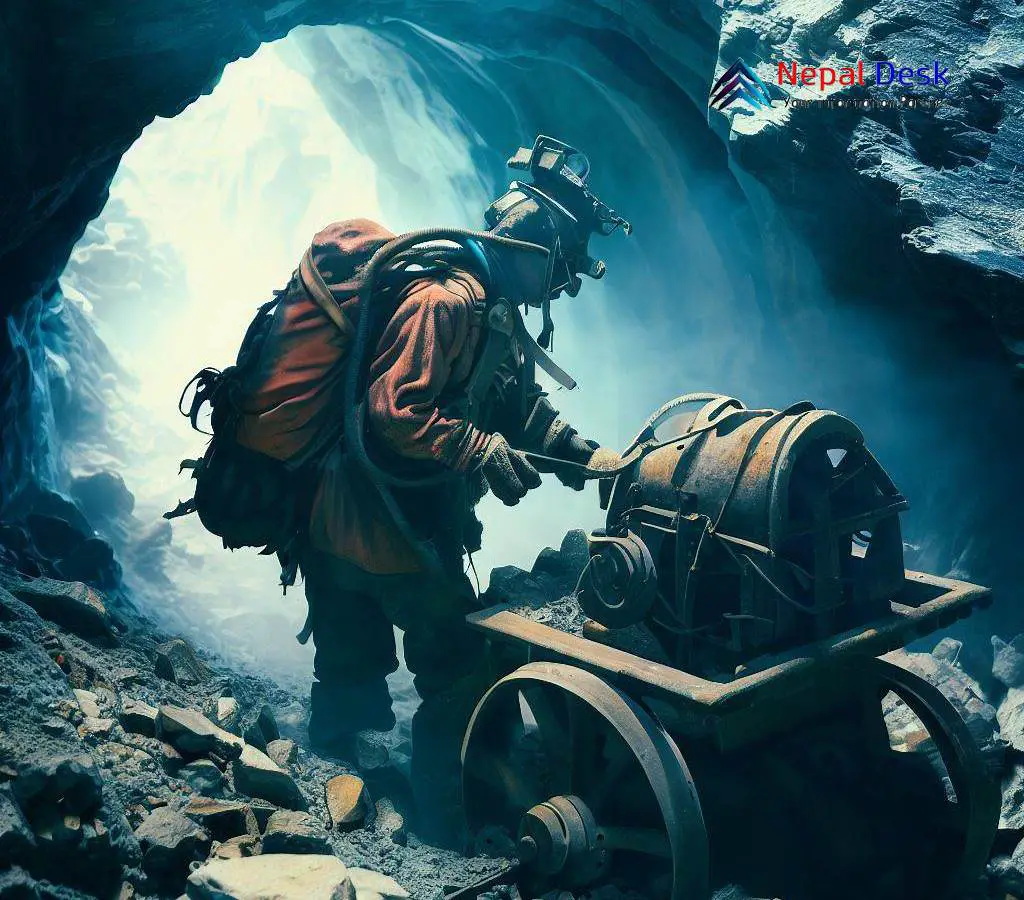432 Companies Obtain Licenses for Mine Exploration in Nepal
Published Date

Published Date
Unveiling Nepal's mining surge: An analysis of rising licenses, mineral wealth, and investment opportunities in the heart of the Himalayas.
⏱ 3 min read
KATHMANDU, Aug 17: The Department of Mines and Geology in Nepal has granted licenses to 432 companies to explore potential mining sites across the country. This move is part of the department's ongoing efforts to promote mining-based industries in Nepal.
The Lainchaur-based Department, which has been operational in the fields of mines and geology since 2033 BS, has seen an increase in the number of licenses granted this year. Last year, 374 mining companies were given licenses for exploration.
Information Officer of the Department, Narayan Baskota, highlighted that a significant number of licenses were granted for the exploration of limestone and copper. He also noted that many of the companies seeking licenses for mine exploration are Chinese.
However, not all licensed companies have commenced their exploration activities. Only 50% of the companies have started their excavation processes, while the rest are still in the preparatory stages.
In the fiscal year 2022/23, the Department had to revoke the licenses of 121 companies due to their inactivity in exploration and excavation.
The exploration licenses cover a range of minerals, including iron, copper, gold, limestone, ruby, granite, kainite, and dolomite.
The recent growth in licenses issued by the Department of Mines and Geology highlights Nepal's hidden mineral potential. With its varied landscape, the country is abundant in mineral resources, and the increasing attention from companies, particularly those from China, emphasizes this potential.
Analyzing the Trend
In the last five years, there's been a consistent rise in the number of granted licenses. The 15% increase from 374 licenses last year to 432 this year showcases this trend. If maintained, this growth could result in over 500 companies securing licenses by 2025.
It's important to note the dominant interest in limestone and copper exploration. Limestone is a crucial component for producing cement and aligns with Nepal's infrastructure development goals. As the country pours investments into roads, bridges, and buildings, the demand for cement is predicted to increase. Meanwhile, copper — an essential element in electrical equipment — has an expanding market due to the worldwide shift towards renewable energy and electric vehicles.
Investment Possibilities
Considering the present trends, numerous profitable investment opportunities arise:
Infrastructure Growth: With limestone exploration on the rise, investing in cement production facilities can yield profitable returns. Locally produced cement can significantly reduce Nepal's dependence on imports and ensure a constant supply for its thriving construction industry.
Mining Technology: The growing number of companies entering exploration will create a demand for cutting-edge mining technology and equipment. Firms specializing in mining tech can explore this emerging market.
Processing Facilities: Setting up processing plants for minerals like copper can increase the value of raw materials, enhancing the country's export potential.
Training and Skills Development: The mining industry necessitates a skilled workforce. Investments in training centers that provide courses on mining technology, safety practices, and machinery operation can help bridge the skill gap within this sector.
In Conclusion
Nepal's mining sector is on the cusp of significant change. The rising number of licenses and diverse minerals being explored show great promise. For investors, this is the ideal time to enter a sector that's primed for growth. By implementing the right strategies and focusing on sustainable mining practices, Nepal can utilize its mineral riches to drive its economic expansion.
